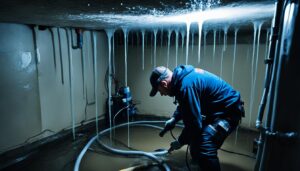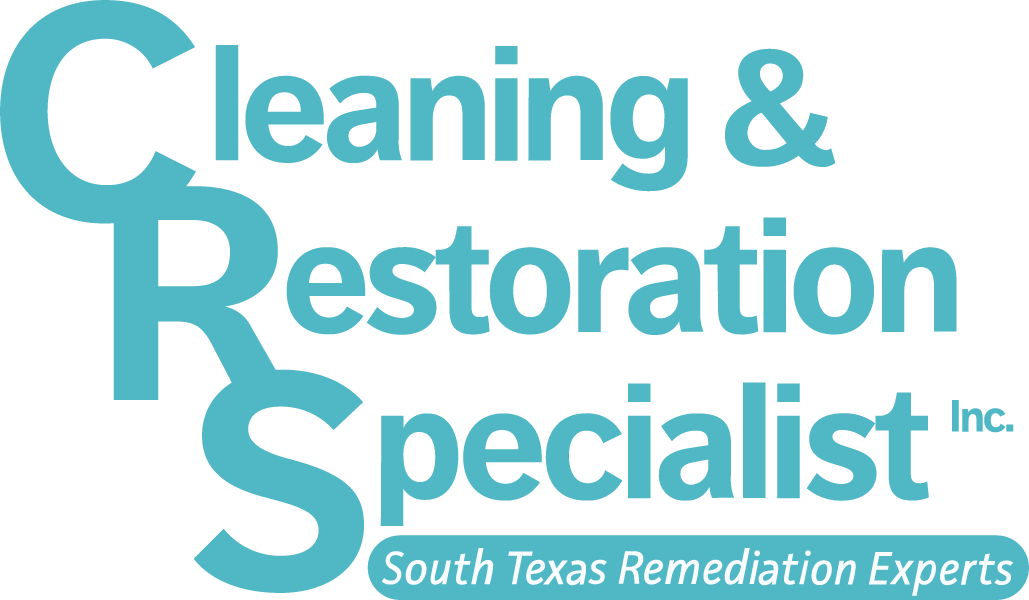Restoring a home after water damage can take varying amounts of time depending on the severity of the damage. It is crucial to act quickly to prevent further damage. Water damage can happen immediately, with significant damage occurring within an hour. The water restoration process includes inspection, securing waterlogged areas, water extraction, drying with air movers and dehumidifiers, air purification, repair and reconstruction, and coordinating with insurance. The drying process generally takes about 72 hours, but larger areas may take longer. The overall restoration timeline can range from days to several weeks or even months. It is important to consider factors such as asbestos testing and the presence of contaminated water. Immediate action is necessary to prevent major damage and health risks.
Key Takeaways:
- Restoring a home after water damage depends on the severity of the damage.
- Immediate action is crucial to prevent further damage and health risks.
- The water restoration process includes inspection, water extraction, drying, repair, and coordination with insurance.
- The drying process generally takes about 72 hours, but larger areas may take longer.
- Factors such as asbestos testing and contaminated water should be considered during the restoration process.
Factors Affecting the Restoration Timeline
Several factors can impact the length of time it takes to restore a home after water damage occurs. Understanding these factors is essential in managing expectations and ensuring a smooth and efficient restoration process.
- The extent of the damage: The severity and scope of the water damage will play a significant role in determining the time needed for restoration. Minor water damage, such as a small leak, may require less time compared to extensive flooding that affects multiple rooms or levels of the home.
- Type of water involved: The type of water involved in the damage can also affect the restoration timeline. Clean water from a burst pipe or faucet is less challenging to remove and dry compared to contaminated water from a sewage backup or natural disaster. Additional steps and precautions may be necessary for dealing with contaminated water, which can extend the restoration process.
- Accessibility and preparation: The accessibility of the affected areas and the level of preparation prior to restoration can impact the timeline. If the affected areas are easy to access and clear of belongings or furniture, restoration work can commence more quickly. However, if there are obstacles or significant preparation needed, such as moving furniture or dismantling structures, it may take longer to begin the restoration process.
- Size and layout of the property: The size and layout of the property can also influence the restoration timeline. Larger homes or properties with complex layouts may require more time for inspection, water extraction, drying, and repair. Moreover, if there are multiple stories or hard-to-reach areas, it may be more challenging to thoroughly dry and restore the affected spaces, potentially prolonging the overall restoration time.
It is important to note that these factors are interrelated, and each restoration project is unique. Therefore, it is recommended to consult with a professional water damage restoration company to assess the specific circumstances and determine a realistic timeline for the restoration process.
| Factors Affecting the Restoration Timeline | Impact on Restoration Time |
|---|---|
| Extent of the damage | Can vary from a few days to several weeks |
| Type of water involved | Adds additional steps and precautions |
| Accessibility and preparation | Obstacles or significant preparation can extend the timeline |
| Size and layout of the property | Larger properties or complex layouts may require more time |
The Water Restoration Process
The water restoration process consists of several crucial steps that must be followed to ensure effective restoration and prevent further damage. After assessing the extent of the water damage, the first step is inspection. This involves identifying the source of the water, assessing the affected areas, and determining the category of water damage (clean water, gray water, or black water).
- Securing waterlogged areas is the next step. This involves stopping the source of the water and ensuring that affected areas are safe to enter. It may include shutting off the main water supply, turning off electricity to prevent hazards, and addressing any structural issues that may pose a risk.
- Water extraction is then performed using professional-grade equipment. This includes pumps, wet vacs, and specialized tools to remove standing water and excess moisture from carpets, upholstery, and other affected surfaces.
- To facilitate drying, air movers and dehumidifiers are used. Air movers circulate air, speeding up the evaporation process, while dehumidifiers remove excess moisture from the air. This step is essential in preventing mold growth and further damage.
- Additionally, air purification is conducted to improve air quality and eliminate any lingering odors. This may involve the use of air scrubbers or the application of antimicrobial treatments to ensure sanitation.
- Once the affected area is dry, the next step is repair and reconstruction. This includes replacing damaged materials, such as drywall and flooring, and restoring the affected space to its pre-damaged condition. It is important to work with reputable contractors who specialize in water damage restoration to ensure proper and long-lasting repairs.
- Throughout the restoration process, coordination with insurance is vital. Documenting the damage, filing claims, and communicating with adjusters is necessary to ensure a smooth and efficient restoration process.
The drying process typically takes around 72 hours, depending on the size of the affected area and the extent of the damage. However, larger areas or more severe damage may require more time. It is important to note that the overall timeline for home restoration after water damage can range from days to several weeks or even months, depending on the specific circumstances.
It is crucial to consider additional factors during the restoration process. Asbestos testing may be necessary, especially in older homes, to ensure the safety of occupants. Contaminated water, such as sewage backups or water from natural disasters, requires specific protocols for safe cleanup. Immediate action is necessary to prevent major damage and health risks associated with water damage.
| Step | Duration |
|---|---|
| Inspection | Varies |
| Securing waterlogged areas | Varies |
| Water extraction | Varies |
| Drying with air movers and dehumidifiers | Approximately 72 hours |
| Air purification | Varies |
| Repair and reconstruction | Varies |
| Coordination with insurance | Varies |
Additional Considerations for Restoration
In addition to the primary restoration tasks, there are other important considerations that can impact the overall time frame for restoring a home after water damage. These factors include the need for asbestos testing, the presence of contaminated water, and coordination with insurance companies.
Asbestos is a hazardous material commonly found in older homes, especially those built before the 1980s. When water damage occurs, it can disturb asbestos-containing materials, releasing harmful fibers into the air. As a result, it is crucial to conduct thorough asbestos testing before beginning any restoration work. This process can take a few days, depending on the extent of the testing required.
Contaminated water, such as that from sewage backups or flooding, can pose significant health risks. It may contain bacteria, viruses, and other harmful microorganisms. Cleaning up and safely disposing of contaminated water requires specialized equipment and protocols, which can add to the overall restoration time frame.
Coordinating with insurance companies is another important consideration during the restoration process. It involves documenting the damage, filing claims, and working closely with adjusters to ensure proper coverage for the necessary repairs. This step can sometimes lead to delays, as it requires thorough communication and negotiation between all parties involved.
| Consideration | Estimated Time Frame |
|---|---|
| Asbestos Testing | Varies depending on extent |
| Contaminated Water Cleanup | Additional time required |
| Insurance Coordination | Variable, depending on communication and negotiation |
Time Frame Variations and Expectations
The time frame for restoring a home after water damage can vary depending on multiple factors, leading to different expectations for homeowners. It is important to understand that every water damage restoration project is unique, and the timeline will depend on the severity of the damage, the size of the affected area, and the type of water involved. Here are some key factors that can affect the restoration timeline:
- Extent of the damage: The more extensive the damage, the longer it will take to restore the home. If water has affected multiple rooms or if there is structural damage, the restoration process will likely be more time-consuming.
- Type of water: The type of water involved can also impact the restoration timeline. Clean water, such as from a broken pipe, may require less time for drying and decontamination. However, if the water is contaminated, for example, from a sewage backup or flood, additional steps will be needed to ensure the safety of the home.
- Size of the affected area: The size of the area affected by water damage can influence the time it takes for drying and restoration. Larger areas may require more equipment, such as air movers and dehumidifiers, and may take longer to dry thoroughly.
- Coordination with insurance: Dealing with insurance companies and the claims process can also affect the overall restoration timeline. It is important to communicate and coordinate with your insurance provider to expedite the restoration process.
The drying process is a crucial stage in water damage restoration, and it generally takes about 72 hours. However, larger areas or areas with significant moisture saturation may require more time. Restoration projects can range from a few days to several weeks or even months, depending on the complexity of the damage and the necessary repairs and reconstruction.
It is also important to consider additional factors during the restoration process. If your home was built before the late 1980s, it might contain asbestos, which requires testing and proper handling. Contaminated water can pose health risks and requires additional precautions. Taking immediate action and hiring professionals experienced in water damage restoration is essential to prevent further damage and health risks.
| Factors Affecting Restoration Timeline | Estimated Time Frame |
|---|---|
| Extent of the damage | Varies (can range from days to weeks) |
| Type of water | Varies (can require additional time for decontamination) |
| Size of the affected area | Varies (larger areas may take longer) |
| Coordination with insurance | Varies (depends on the claims process) |
In conclusion, the time frame for restoring a home after water damage is not set in stone and can vary based on several factors. It is essential to act swiftly, hire professionals, and consider all the necessary steps and precautions to ensure a safe and thorough restoration process.
Conclusion
Restoring a home after water damage requires prompt action and careful attention to various factors to ensure a successful and timely restoration process. Immediate action is crucial in preventing further damage, as water damage can occur rapidly, with significant damage occurring within just an hour. The water restoration process involves several steps, including inspection, securing waterlogged areas, water extraction, drying with air movers and dehumidifiers, air purification, repair and reconstruction, and coordinating with insurance.
The drying process is a critical stage in the restoration process and generally takes about 72 hours. However, larger areas may require additional time for complete drying. The overall timeline for home restoration after water damage can vary significantly, ranging from a few days to several weeks or even months, depending on the severity of the damage and the size of the affected area.
It is important to consider additional factors during the restoration process, such as asbestos testing and the presence of contaminated water. Asbestos testing is necessary when dealing with older homes to ensure the safety of the occupants and restoration workers. The presence of contaminated water, such as sewage or floodwater, requires proper handling and disinfection to prevent health risks.
To ensure a successful and efficient restoration process, it is essential to coordinate with insurance companies from the beginning. Timely communication and documentation of the damage will help facilitate the claims process and expedite the restoration efforts. By taking immediate action, considering all relevant factors, and working with professionals, you can restore your home after water damage and minimize the impact on your property and health.
FAQ
How long does it take to restore a home after water damage?
The time it takes to restore a home after water damage can vary depending on the severity of the damage. The overall restoration timeline can range from days to several weeks or even months.
What factors can affect the restoration timeline?
Factors that may affect the time it takes to restore a home after water damage include the extent of the damage and the type of water involved, such as clean water or contaminated water.
What is involved in the water restoration process?
The water restoration process typically includes inspection, securing waterlogged areas, water extraction, drying with air movers and dehumidifiers, air purification, repair and reconstruction, and coordinating with insurance. The drying process generally takes about 72 hours, but larger areas may take longer.
Are there any additional considerations during the restoration process?
Yes, it is important to consider additional factors during the restoration process. This may include the need for asbestos testing, if applicable, and dealing with the presence of contaminated water. Coordinating with insurance companies is also crucial.
Are there variations in the time frame for restoration projects?
Yes, there can be variations in the time frame for restoration projects. The drying process and the overall duration of the restoration project may vary depending on the size of the affected area and the severity of the damage.
Why is immediate action necessary after water damage?
Immediate action is necessary to prevent further damage and health risks. Water damage can happen immediately, with significant damage occurring within an hour. Acting quickly can help minimize the extent of the damage and ensure a more efficient restoration process.









